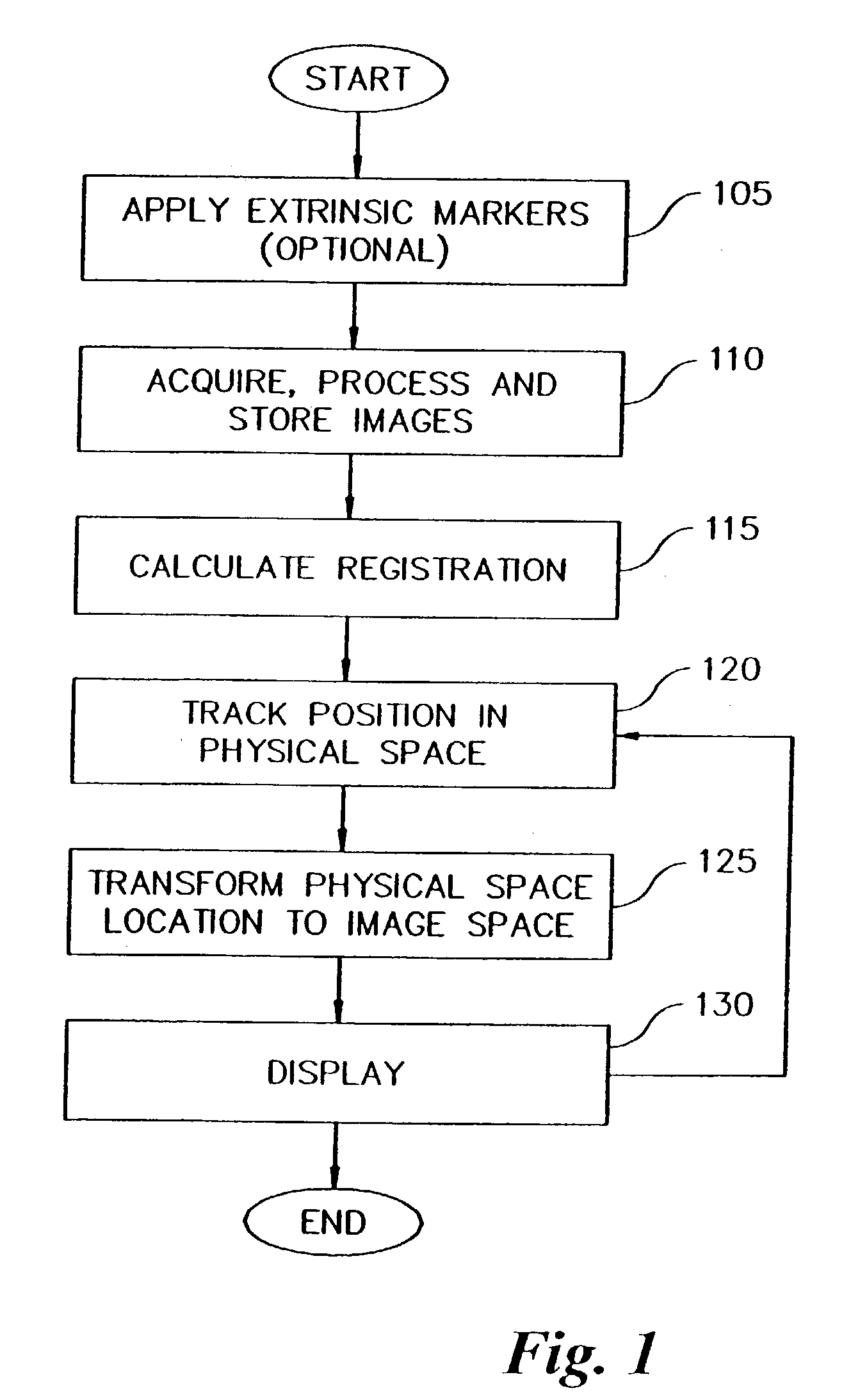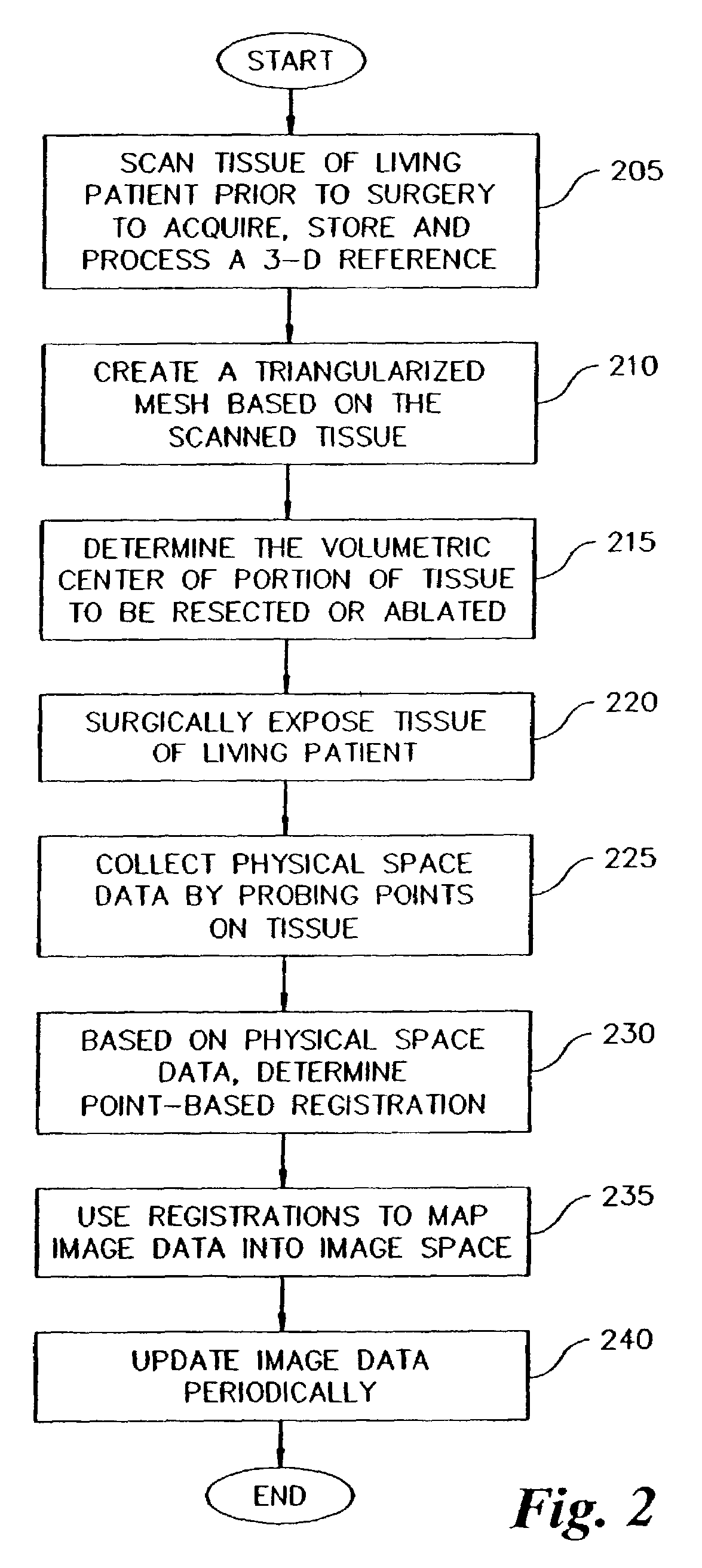Method and apparatus for collecting and processing physical space data for use while performing image-guided surgery
a technology of physical space and data collection, applied in the field of using imageguided surgery techniques, can solve the problems of frame discomfort for patients, dos-based systems without the continuing support of hardware vendors, etc., and achieve the effect of thorough investigation of the accuracy of all registration techniques
- Summary
- Abstract
- Description
- Claims
- Application Information
AI Technical Summary
Benefits of technology
Problems solved by technology
Method used
Image
Examples
Embodiment Construction
[0040]FIG. 1 shows some of the major events involved in preparing for and performing IIGS. In step 105, it is determined if any extrinsic markers will be attached to the patient. These makers, or fiducials, are designed to be imaged and then localized in both image space and physical space for use in a point-based registration algorithm. Appropriate image volumes for a patient are then acquired, stored and processed (step 110). Most image volumes are acquired as a set of slices, 256×256 or 512×512 pixels per slice at 2 bytes per pixel with 20–200 images per volume. These images are acquired on a computerized tomography (CT) scanner, a magnetic resonance imaging (MRI) scanner or a positron emission tomography (PET) scanner. Images are typically transferred from PACS servers in radiology to image-guided surgical computers, where they are processed for display before surgery if necessary. Transverse, sagittal, or coronal tomographic slices require minor processing before display. In or...
PUM
 Login to View More
Login to View More Abstract
Description
Claims
Application Information
 Login to View More
Login to View More - R&D
- Intellectual Property
- Life Sciences
- Materials
- Tech Scout
- Unparalleled Data Quality
- Higher Quality Content
- 60% Fewer Hallucinations
Browse by: Latest US Patents, China's latest patents, Technical Efficacy Thesaurus, Application Domain, Technology Topic, Popular Technical Reports.
© 2025 PatSnap. All rights reserved.Legal|Privacy policy|Modern Slavery Act Transparency Statement|Sitemap|About US| Contact US: help@patsnap.com



